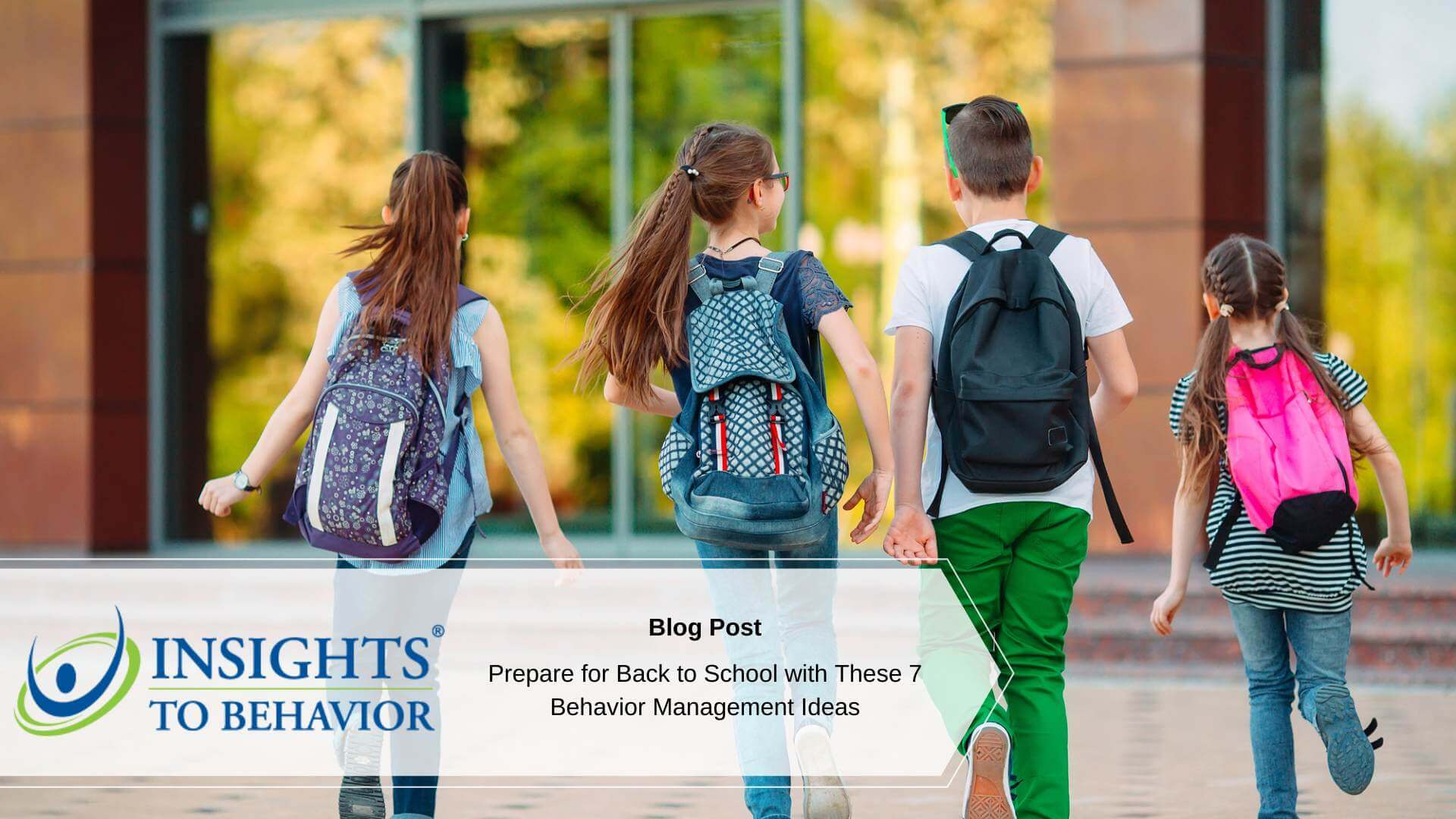A new school year is approaching and that means that you’ll have a group of brand new students to welcome and educate. Are you ready for the challenge?
Whether you’re a teacher yourself, someone who oversees and instructs teachers, or anyone else who helps with behavior management, you know how important it is to start the year off on the right foot. When students come back to school, you need a plan in place.
Going back to school is hard on children. They spent all summer being able to play and socialize. If your school hadn’t been in session at the end of last spring due to the pandemic, it will be an even more jarring shift for students.
So what do you do once you’ve acquired your back-to-school supplies and set up the classrooms? We’re here to offer advice. Keep reading to learn more.
1. Review the Functions of Behavior
When the year starts again, it’s easy to forget some important points from your previous teaching experience. You (like your students) have to re-adjust to being in a classroom environment and coexisting.
One thing that frustrates many educational professionals at the beginning of each school year is behavioral issues. Students can act out and misbehave from the get-go, and educators haven’t yet built up a strong relationship or tolerance for this behavior.
This is why it’s so important to review the functions of behavior as they apply to young students. The functions of behavior exist to explain why students act the way that they do. By reviewing them, you’ll be better at interacting with your students and you’re sure to get less frustrated.
2. Have Clear Visual Reminders
After you establish your boundaries and expectations for the classroom, make sure that you have visual reminders that your students can look at (or that you can point to) when they forget them.
It’s a great idea to make posters and infographics about your rules and guidelines. If you want to get the students involved and increase the chances of them remembering, have them make their own posters or binder inserts with the rules on them.
This is a small thing that will make a big difference. Children don’t always have great attention spans, so having visual reminders accessible to them will help them remember and behave.
3. Learn to Help Students with Trauma
Is your educational style trauma-informed?
More and more educational professionals are paying attention to children with trauma and their needs. Children who have experienced trauma (at home or elsewhere) may have specific challenges in the classroom.
There are many things that can cause trauma for a child. Notably, the COVID-19 pandemic has been a traumatic time for people of all ages. You may notice signs of trauma (even if they’re mild) in many of your students as a result of this.
Students who are in foster care, who are in dysfunctional households, or who have experienced a serious illness or death in the family are all likely to enter the classroom with some degree of trauma.
When you know how to support these students, you’ll foster a more comforting and welcoming environment where they can thrive.
4. Establish Memorable Cues
Sometimes, even the best planning isn’t enough to stop misbehavior in the classroom. Remember, students don’t misbehave because they’re “bad” or have bad intentions. They get distracted and they aren’t yet adept at managing their emotions.
When you have a student that displays behavior problems, talk to them in private about visual or audio cues that you can use to remind them of the rules without disrupting the class.
You can also have the student come up with a simple cue for when they need to take a moment for themself in the hallway or if they need to talk.
These cues will keep class running smoothly for other students and build trust with the student who has behavioral problems. You could also assign cues to all of your students ahead of time, but this isn’t always necessary.
5. Learn to Help Students with ADHD
ADHD is one of the more common conditions amongst children. While some children don’t display the more “problematic” features of ADHD (such as hyperactivity or emotional outbursts), many do. It’s crucial that you know how to understand and respond to these students.
Too many educational professionals neglect these students, even if they don’t mean to. Because students with ADHD have different needs and often display behavior problems, they may fall through the cracks.
Review our tips for helping students with ADHD in the classroom. Many of these strategies work for all students, not just students with ADHD, so they’re good to keep in mind regardless of who is in your classroom this term.
6. Praise Good Behavior (No Matter How Small)
Too many educational professionals resort to negative reinforcement or punishment when it comes to misbehaving students. Is this really the best choice?
Research suggests, time and time again, that positive reinforcement and praise are better motivators than punishment. When you reward good behavior, children want to continue chasing that reward. This means that they will maintain (or improve) the good behavior.
Praise shouldn’t be exclusively for exemplary behavior. Even small accomplishments are worthy of praise, and they encourage larger accomplishments in the future.
For example, if you have a student who struggles to sit still during the day and finish their assignments, you should praise them if they’re able to do so. While it may not seem like an accomplishment to do what you expect of them, it was hard work for the child and you want to make it worthwhile.
Prepare for Students Coming Back to School With These Tips
When your students make their way back to school, you need to be ready. By preparing the right way and implementing these behavior management tips, you’ll set everyone up for a successful and smooth school year.
Are you looking for behavior management solutions for your school or program?
If you’re interested in our professional behavior management software, you can request a free demo today. You’ll learn how to create behavior intervention plans in under an hour.
We have other behavior management information as well, including a free monthly newsletter for educators everywhere. Sign up today and see the difference that our solutions can make for you!






